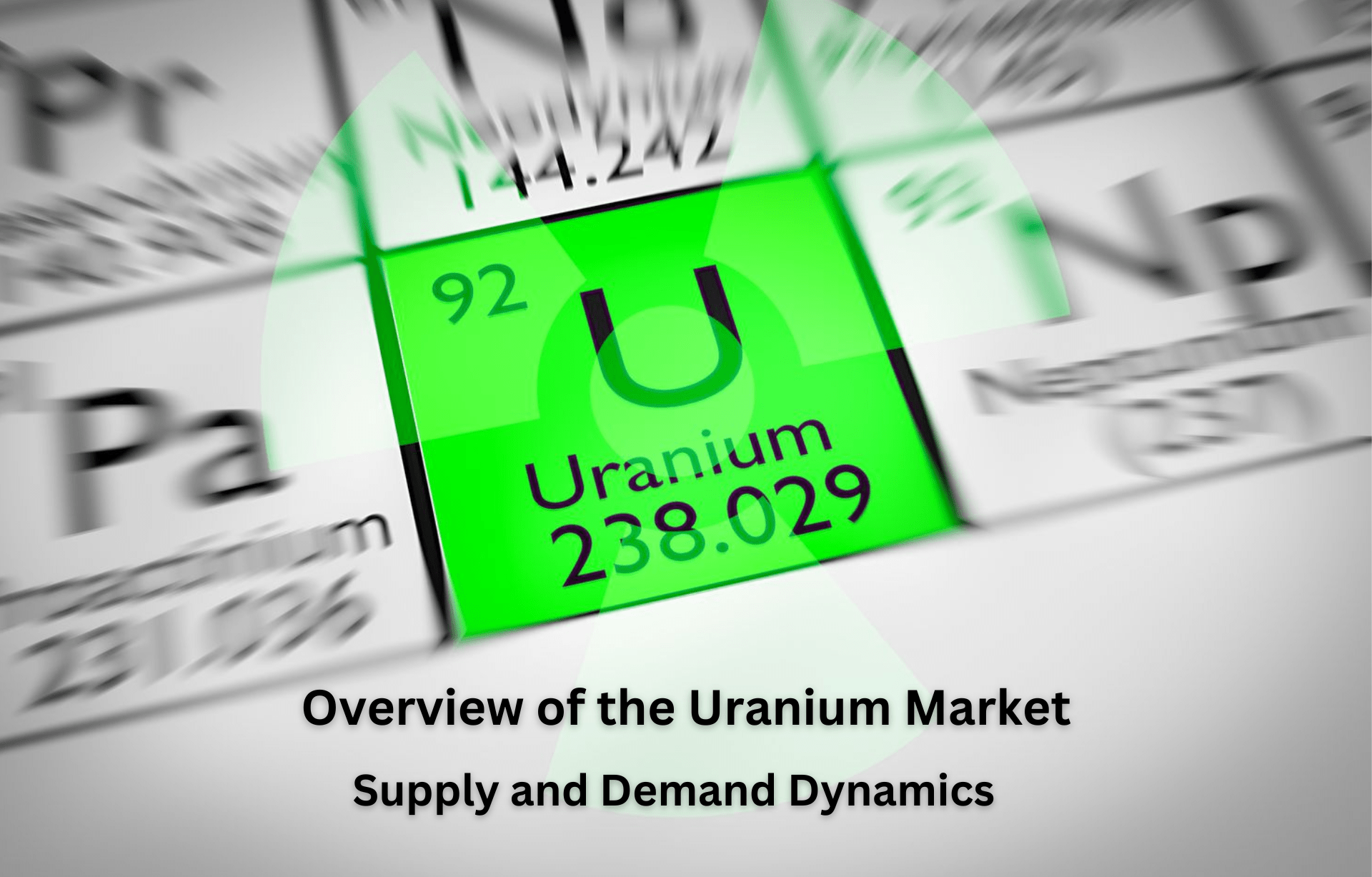
Overview of the Uranium Market
Uranium is a naturally occurring radioactive element used as a fuel for nuclear power plants. It is primarily produced through mining and then processed into fuel rods for use in nuclear reactors. The uranium market has historically been characterized by cycles of oversupply and undersupply, with prices fluctuating accordingly.
In recent years, the uranium market has been in a state of oversupply, with prices reaching historic lows. This has been due to a combination of factors, including a slowdown in nuclear power plant construction, the after-effects of the 2011 Fukushima disaster, and increased competition from renewable energy sources. However, there are some positive signs of recovery in the uranium market. Growing demand for nuclear energy, particularly in developing countries, has led to increased interest in uranium exploration and development. In addition, several countries have announced plans to reduce their carbon emissions and transition to cleaner energy sources, which could lead to greater investment in nuclear energy and further boost demand for uranium.
Supply and Demand Dynamics
The uranium market is driven by supply and demand dynamics. On the supply side, uranium is primarily produced through mining. The largest producers of uranium are Kazakhstan, Canada, and Australia, which together account for more than half of global uranium production. Other significant producers include Russia, Uzbekistan, and the United States. On the demand side, uranium is primarily used as a fuel for nuclear power plants. According to the World Nuclear Association, there are currently 443 operable nuclear reactors worldwide, with 53 under construction, and another 110 planned or proposed. This increasing demand for nuclear power is expected to drive demand for uranium. However, the uranium market can be subject to fluctuations in both supply and demand. For example, disruptions to uranium production, such as mining accidents or labor strikes, can lead to supply shortages and higher prices. Similarly, changes in government policies or regulations can impact the demand for nuclear energy and, in turn, the demand for uranium.
Recent Trends in the Uranium Market
In recent years, the uranium market has faced several challenges. In the aftermath of the Fukushima disaster in 2011, which led to a temporary shutdown of Japan’s nuclear power plants, demand for uranium fell sharply. This was compounded by a slowdown in nuclear power plant construction and increased competition from renewable energy sources. As a result, uranium prices reached historic lows in 2016, with the spot price falling to around $18 per pound. Since then, prices have recovered somewhat, but they remain well below their pre-Fukushima levels.
Despite the challenges facing the uranium market, there are some positive signs of recovery. In 2020, the spot price of uranium rose by more than 35%, driven by growing demand from utilities and a reduction in supply from key producers. In addition, several uranium mining companies have announced plans to increase production or restart operations at previously shuttered mines. This includes Cameco, one of the world’s largest uranium producers, which announced plans to restart operations at its Cigar Lake mine in Canada in September 2020.
Potential Factors Impacting the Uranium Market in 2023
There are several potential factors that could impact the uranium market in 2023. These include:
1. Demand for Nuclear Energy: As mentioned earlier, demand for nuclear energy is a key driver of the uranium market. If demand for nuclear energy continues to grow, this could support higher prices for uranium. However, if demand for nuclear energy stagnates or declines, this could lead to oversupply and lower prices.
2. Government Policies and Regulations: Government policies and regulations can have a significant impact on the
Due diligence is the key when searching for investments in stocks in the Uranium space.